Check out the June 20 edition of What’s Trending in Aerospace, where editors and contributors for Avionics International bring you some of the latest headlines and updates happening across the global aerospace industry.
Commercial
Boeing 737 MAX 10 Completes First Flight
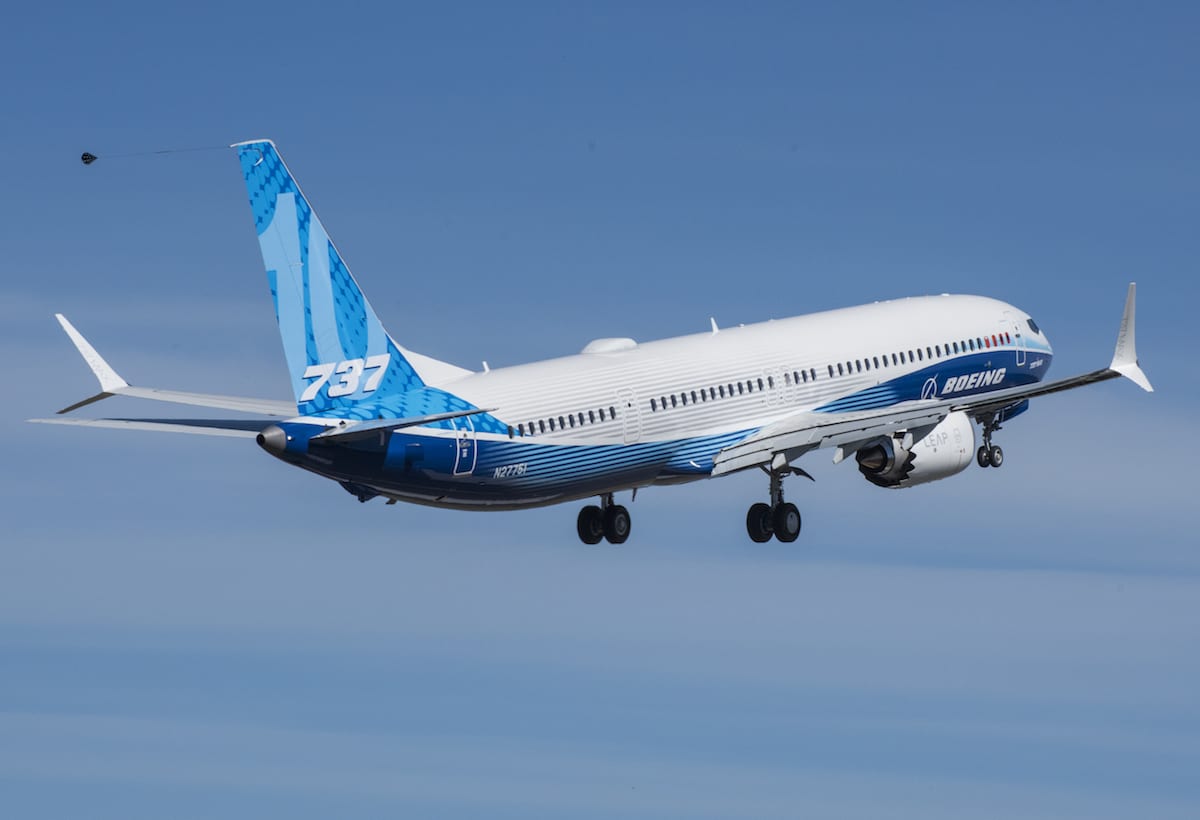
The 737 MAX-10 completed its first flight in Renton, Washington on Friday. (Boeing)
Boeing’s 737-10, the largest airplane in the 737 MAX family, on Friday completed a successful first flight. The airplane took off from Renton Field at 10:07 a.m. and landed at 12:38 p.m. at Boeing Field in Seattle.
“The airplane performed beautifully,” 737 Chief Pilot Capt. Jennifer Henderson said in a June 18 press release. “The profile we flew allowed us to test the airplane’s systems, flight controls and handling qualities, all of which checked out exactly as we expected.”

The MAX-10 lands at Boeing Field Seattle. (Boeing)
The 737-10 can carry up to 230 passengers. It also incorporates environmental improvements, cutting carbon emissions by 14 percent and reducing noise by 50 percent compared to today’s Next-Generation 737s, according to Boeing.
Boeing expects the 737-10 to enter into service in 2023.
Airbus-Boeing Resolution Commits to Transparency on Government Funding for Aircraft R&D
Under a new agreement between European Union (EU) and United States (U.S.) officials announced on June 15, tariffs on large aircraft parts and components have been suspended by both sides for a period of five years that resolves a 17-year trade dispute involving Airbus and Boeing.
According to the cooperative framework published by the Office of the United States Trade Representative (USTR), a key provision within the new agreement is that both sides will be subjected to a more open and transparent process in the way that they provide government funding in support of research and development of new aircraft programs and technologies developed by Airbus and Boeing.
Airbus Establishes Zero-Emission Development Centers in Germany and France
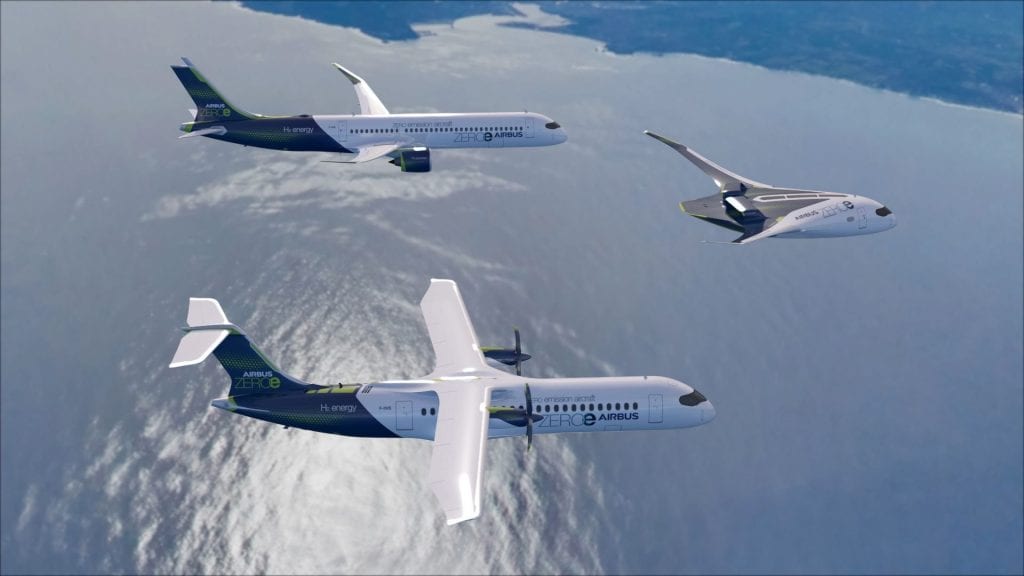
Airbus has decided to concentrate its efforts for metallic hydrogen tanks in a complementary setup by creating Zero-Emission Development Centers (ZEDC) at its sites in Bremen, Germany and Nantes, France, according to a June 14 press release. The goal of the ZEDC is to achieve cost-competitive cryogenic tank manufacturing to support the successful future market launch of ZEROe and to accelerate the development of hydrogen-propulsion technologies.
The ZEDCs will focus on technology developments that cover the full product and industrial capabilities from elementary parts, assembly, systems integration and the cryogenic testing of the final liquid hydrogen (LH2) tank system, according to Airbus.
“The tank is a safety-critical component, for which specific systems engineering is needed. LH2 is more challenging than kerosene because it needs to be stored at -250 °C to liquefy. Liquidity is needed for increased density. For commercial aviation, the challenge is to develop a component which can withstand repeated thermal and pressure cycling which an aircraft application demands,” Airbus said in the release.
GE Aviation, Safran Launch Advanced Technology Demonstration Program for Sustainable Engines

Technologies matured as part of the RISE Program will serve as the foundation for the next-generation CFM engine that could be available by the mid-2030s, according to GE Aviation.
GE Aviation has established a partnership with Safran to launch a new technology development program targeting more than 20 percent lower fuel consumption and CO2 emissions compared to today’s in-service commercial aircraft engines, according to a June 14 press release.
The CFM RISE (Revolutionary Innovation for Sustainable Engines) program will demonstrate and mature a range of new, disruptive technologies for future engines that could enter service by the mid-2030s, the two companies said in the release.
Additionally, the two companies are extending their CFM International 50/50 partnership to the year 2050.
“Our industry is in the midst of the most challenging times we have ever faced,” Olivier Andriès, CEO of Safran, said in the release. “We have to act now to accelerate our efforts to reduce our impact on the environment. Since the early 1970s, breakthrough engine efficiency and reliability have been the hallmark of our historic partnership and our LEAP engine already reduces emissions by 15 percent compared to previous generation engines. Through the extension of our CFM partnership to 2050, we are today reaffirming our commitment to work together as technology leaders to help our industry meet the urgent climate challenges.”
General Motors and Liebherr Partner to Develop Hydrogen Fuel Cell System for Commercial Aircraft

General Motors and Liebherr-Aerospace will join forces to develop a hydrogen fuel cell-based demonstrator system for aircraft. The collaboration is based on GM’s HYDROTEC technology, like this hydrogen fuel cell stack. (Liebherr)
General Motors and Liebherr-Aerospace have agreed to collaborate on development of a HYDTROTEC hydrogen fuel cell technology-based electrical power generation system for aircraft applications.
The two companies will explore possibilities to leverage Liebherr’s strong position as an on-board aircraft system supplier, together with GM’s leadership in hydrogen fuel cell technology, to develop an “integrated system, customized to the performance and economic requirements of commercial aircraft,” Liebherr said in the release.
Moving forward, the two companies will focus on developing an electrical power generation system to demonstrate how hydrogen fuel cell-based power systems could be used in aircraft applications. The construction and testing of this demonstrator will take place in a specialized laboratory multi-system integration testing at Liebherr-Aerospace in Toulouse, France.
“The change from the conventional to a hydrogen technology-based electrical power generation system means major systems modifications on board the aircraft that could result in better, more efficient performance of the plane,” Francis Carla, Managing Director and Chief Technology Officer, Liebherr-Aerospace & Transportation SAS said in the release. “This we want to prove and test thoroughly. The advantage of GM’s HYDROTEC fuel cell technology is that it has shown promise in extensive automotive and military programs, where it has shown to be reliable from the engineering and manufacturing perspectives.”
Leonardo Breaks Ground on New Helicopters Logistics Hub in UK

A computer rendering of Leonardo’s new U.K.-based advanced helicopter logistics hub. (Leonardo)
Leonardo is adding a new £30 million single-site logistics facility to its helicopter site in Yeovil, U.K. The new facility is scheduled to be completed in Q4 2022. The project sees the consolidation of eight existing warehouses into one all-encompassing logistics hub.
“The main aim of the Single-Site Logistics facility at Leonardo’s site in Yeovil is to consolidate all Yeovil-based warehousing. This state-of-the-art facility will streamline the site’s operational capability and customer service by having all logistical support in one place,” Nick Whitney, Managing Director of Leonardo Helicopters (UK), said in a June 16 press release.
The new facility will service the Yeovil production facilities and provide spares support for the global fleet of rotary aircraft built at Leonardo’s site in Yeovil and support the management of production tooling.
Military
General Atomics Acquires Swiss Opto-Electronics Company Synopta
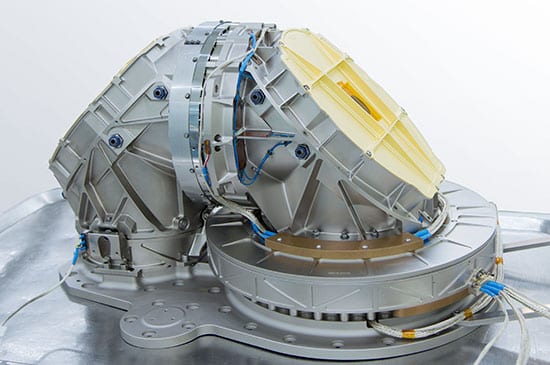
A beam pointing system developed and manufactured by Synopta, the Switzerland-based company recently acquired by General Atomics.
General Atomics (GA) on June 14 said it has acquired Synopta GmbH, a developer and supplier of opto-electronics instrumentation used in space and terrestrial applications, in a deal that complements GA’s existing technologies and improves its ability to provide complete subsystems to customers.
Terms of the deal were not disclosed.
Based in Switzerland, Synopta’s customers include European organization, national agencies and international companies in the defense, space and capital goods sectors. The company provided the beam pointing system for laser communications on satellites launched by the European Space Agency for the European Union’s Copernicus Earth program, GA said. Synopta also provides strategic and technical consultancy services.
GA already has extensive experience in adaptive optics for lasers and telescopes.
“Synopta’s pioneering expertise and innovative developments in communication, beam control, pointing assemblies, and stationary and transportable optical ground systems will supplement the diverse portfolio of laser communications, sensors, and ground systems which enable delivery of dependable solutions to government and other customers,” Scott Forney, president of GA’s Electromagnetic Systems Group, said in a statement. “Synopta will continue to serve its European customer base but will expand now also to customers in the United States and other countries, while contributing to GA’s systems and strategic objectives. Under its new name General Atomics GmbH, the company will form a technical center of excellence within the General Atomics group of companies.”
U.S. Army Taps L3Harris, Raytheon To Develop Multi-Domain Sensing System For Future HADES ISR Aircraft
The Army announced Monday it has selected L3Harris Technologies and Raytheon Technologies for a prototype program to develop a Multi-Domain Sensing System (MDSS) for the service’s High Accuracy Detection and Exploitation System (HADES) intelligence-gathering aircraft program.
The two companies received Other Transaction Authority (OTA) agreements to demonstrate their sensor offerings in the eight-month first phase of MDSS, valued at nearly $4.7 million, before the Army selects one or both vendors to move onto prototype fabrication.
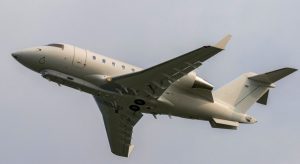
The Airborne Reconnaissance Targeting & Exploitation Multi-Mission Intelligence System (ARTEMIS) aircraft. (U.S. Army)
“The initial award is for Phase 1 of a Multi-Domain Sensing System program to demonstrate, develop, build, and integrate prototype electronic intelligence (ELINT) and communications intelligence (COMINT) sensors onto [HADES], the Army’s next generation airborne intelligence, surveillance, and reconnaissance system,” the Army wrote in a statement. “This competitive first phase of a multi-phased OTA prototype project will demonstrate the vendors’ sensors under controlled conditions, leading to Phase 2 in which one or more vendors will further develop and build their sensors specifically for the HADES platform.”
A third phase will then focus on providing “a holistic COMINT/ELINT system” that will be flight tested to inform potential production requirements, with the entire MDSS prototype effort valued at $49 million.
SpaceX Launches GPS III Satellite on Reused Booster in a US Military Milestone
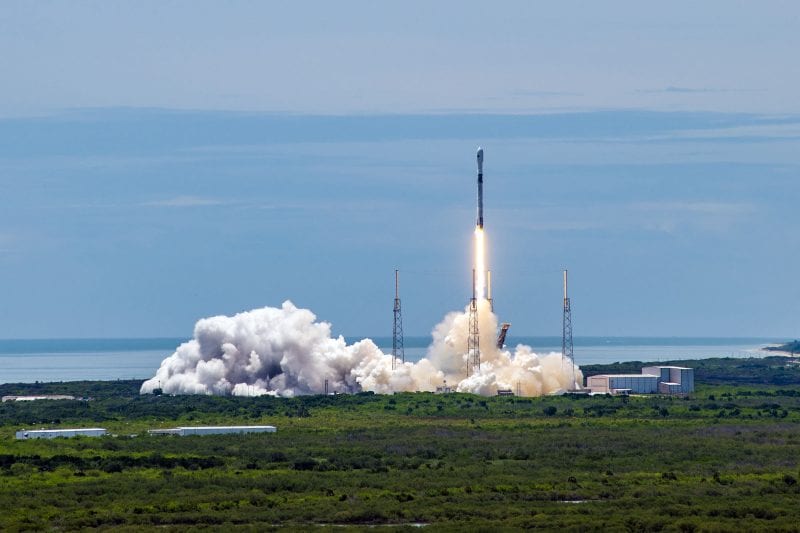
SpaceX launches the fifth GPS III satellite on June 17, 2021. (SpaceX)
SpaceX’s latest GPS III launch was its fourth time launching this type of satellite for the U.S. military, but Thursday’s mission marked a brand-new milestone: It was the first time a National Security Space Launch (NSSL) mission was conducted on a reused booster.
A SpaceX Falcon 9 rocket took off from Launch Complex-40 at Cape Canaveral Space Force Station in Florida on June 17 at 12:09 EST, carrying the Lockheed Martin-built fifth GPS III (SV05). The booster successfully landed on a drone ship in the Atlantic Ocean nine minutes later, and the payload separated just under 1 hour and 30 minutes after liftoff.
The booster used in this mission previously supported the prior GPS III launch in November 2020. The U.S. Space Force previously announced its deal to reuse flight-proven SpaceX boosters in September 2020. At the time, the Space Force agreed to re-fly a booster for SV06 as well. The SV05 launch that took place on Thursday was originally set for January 2021, but pushed to the summer to allow time to validate reuse activities.
Business & GA
Global Business Jet Traffic Surges Above Pre-Pandemic Levels in June

“Business jet demand in Texas and latterly, New York, has stormed ahead of 2019 trends in recent weeks. Within Texas, flight activity is still shy of 2020 let alone 2019, but connections between Texas and Colorado, Florida, and California are higher than ever,” according to WINGX.
According to the latest global business jet traffic activity tracker published weekly by WINGX, during the first half of June, global business jet activity rebounded “well beyond the recovery threshold with relation to flight trends in 2019,” according to a June 17 press release.
With just over 100,000 business jet sectors flown this month, the sector represents 15 percent of all fixed wing movements, with activity going 12 percent higher than in the first half of June 2019. This is the first time business aviation growth is outstripping air cargo growth, according to the release.
In contrast, scheduled commercial airline activity globally is still “languishing more than 40 percent below pre-pandemic normal for this time of year,” according to WINGX.
“During the pandemic, lifestyle and occasionally necessity sustained business jet demand, in the last few months we have seen leisure boost the recovery, and this will accelerate through the summer, with the return of at least some business travel taking utilization to new highs in 2021 compared to 2019,” Richard Koe, managing director of WINGX Advance GmbH, said in the release. “The surge should reliably follow the lifting of restrictions, with international trips waiting longer but almost certainly at the planning stage.”
Embraer, VisionSafe Introduce New Safety System for Praetor Business Jets

Embraer and VisionSafe Corporation today announced that VisionSafe’s EVAS (Emergency Vision Assurance System) is now available for the Praetor 500 and the Praetor 600 business jets. The new feature will be available through a Supplement Type Certificate (STC) issued by VisionSafe Corporation, according to a June 16 press release.
The EVAS system provides a clear space of air through which a pilot can see flight instruments and out the front windshield for landing the plane in the event of cockpit smoke, according to Embraer. In addition to the Praetor aircraft, VisionSafe has also achieved certification for the technology through STCs for the Legacy 600, 650 and Lineage 1000 jets.
“This feature will enhance safety on Embraer’s Praetor business jets,” Marsha Woelber, Head of Worldwide Executive Jets Customer Support & Aftermarket Sales, Embraer Service & Support said in the release. “This reflects the continuous improvement Embraer brings to its successful business jet portfolio.”
Connectivity
Flexjet is Bringing Viasat In-flight Connectivity to Bombardier, Embraer and Gulfstream Jets
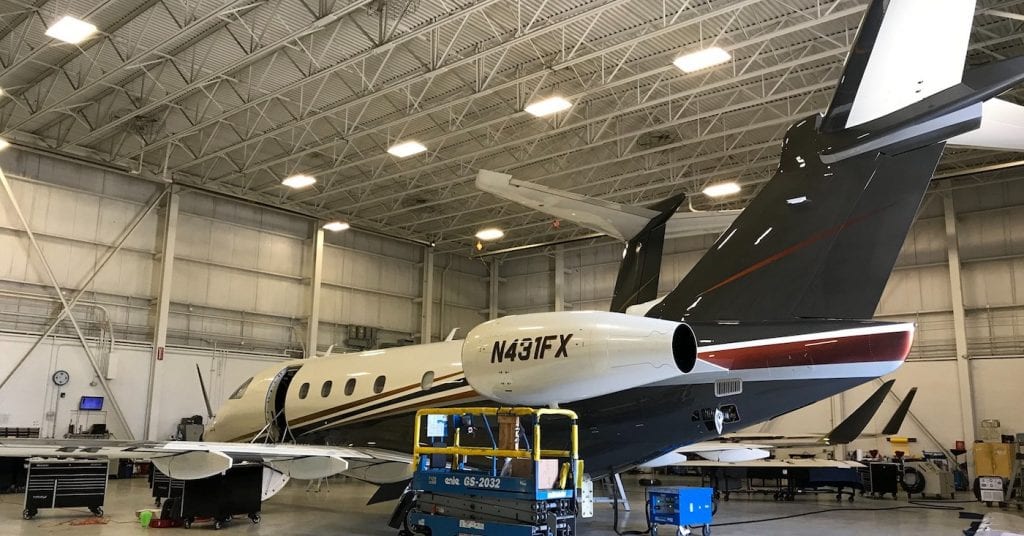
Viasat’s in-flight connectivity is being added to a mix of business jets operated by Flexjet LLC, including the Embraer Praetor 600 pictured here. (Flexjet)
Flexjet LLC is bringing Viasat in-flight connectivity (IFC) to its fleet of Bombardier Globals, Embraer Praetor 600s, and Gulfstream G450/G650 aircraft, through a new partnership between the two companies, according to a June 17 press release.
The new partnership will install Viasat’s Ka-band IFC service on the Flexjet Praetor 600 fleet while adding the Ku-band version of the service to the Globals, G450s, and G650s owned and operated by Flexjet. According to Viasat, Flexjet has already begun receiving Praetor 600s equipped with its Ka-band system, which can enable in-flight connection speeds greater than 20 Mbps.
“When we began evaluating IFC partners to improve our existing connectivity, it became clear that Viasat’s products and services would enhance it on more devices across more of our fleet—which will boost the value of our Owners’ flight experiences,” Flexjet Chief Operating Officer Megan Wolf said in the release. “We also appreciated their satellite roadmap—which would ensure the IFC investments we’re making today will meet the increasing data demands of tomorrow.”
Iridium Names New CTO, Greg Pelton
Iridium Communications has tapped Greg Pelton from Pyron as the company’s new CTO. The company announced Monday that Pelton will take over for retiring CTO Hermon Pon. As CTO, Pelton will oversee the technical aspects of Iridium’s products and services and manage technology development and engineering.
Pelton served as chief product officer at Pyron, an Artificial Intelligence (AI) company focused on augmented intelligence for enterprise. There, he was responsible for all aspects of the company’s augmented intelligence product portfolio. Pelton also previously led Cisco‘s corporate Technology Center where he worked on the Internet Routing in Space (IRIS) program, consisting of developing a router for use in satellites and transitioning of satellite ground networks to multi-service IP networks.
Unmanned
New uAvionix Autopilot and C2 Infrastructure Demonstrated at Northern Plains UAS Test Site
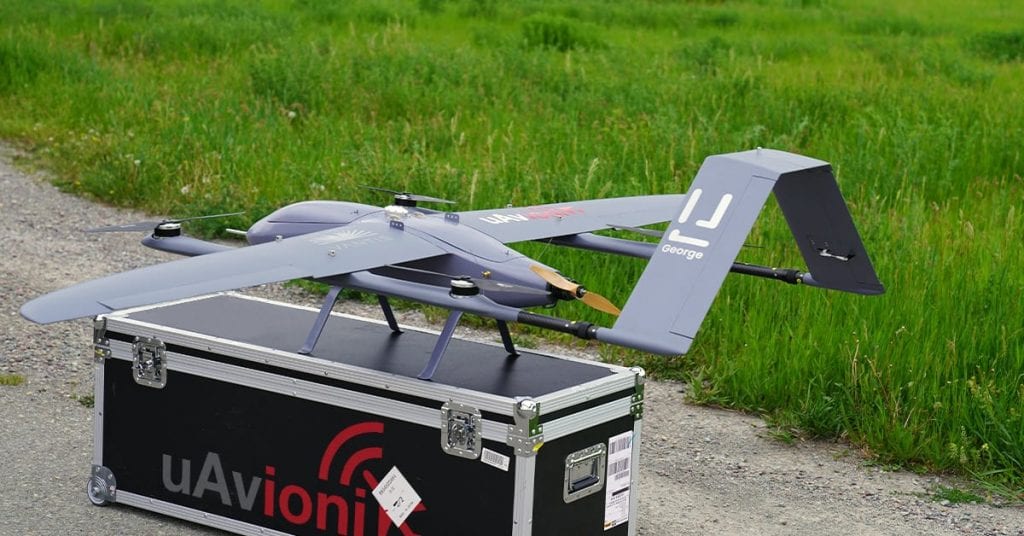
During a 40-mile demonstration flight at the Northern Plains Unmanned Aircraft Systems (UAS) Test Site in North Dakota, uAvionix displayed its new George autopilot and SkyLine C2 infrastructure using three terrestrial skyStation Ground Radio Systems (GRS).
During a 40-mile demonstration flight at the Northern Plains Unmanned Aircraft Systems (UAS) Test Site in North Dakota, uAvionix displayed its new George autopilot and SkyLine C2 infrastructure using three terrestrial skyStation Ground Radio Systems (GRS), according to a June 14 release from the company.
The George Autopilot was announced in April and is compliant with the National Defense Authorization Act, according to the release. It uses DAL C hardware and safety and sensor monitoring for beyond visual line of sight (BVLOS) operations.
uAvionix’s command and control network, Skyline, powered the autonomous 40-mile BVLOS flight, according to the release. This demonstration was the first time three SkyStation terrestrial ground radio locations were managed by the system.
eVTOLs
Lilium Appoints Former Airbus CEO as Chairman, Aligns Business with Qell

Former Airbus CEO Tom Enders will assume the role of chairman of Munich, Germany-based Lilium.
Former Airbus CEO Tom Enders will assume the role of chairman of Munich, Germany-based electric vertical takeoff and landing (eVTOL) 7-seater jet developer Lilium, according to a June 16 press release.
Enders, who previously served as a Lilium Advisory Board member, assumes the new role as Lilium simultaneously completes a business combination with Qell Acquisition Corp., an announcement made as part of the company’s inaugural “Analyst Day,” held June 15.
In a video message, Dr. Enders discussed the importance of these commercial relationships to the future success of Lilium. The video also highlights the new relationships the company has established with long-running aviation organizations and companies such as Honeywell Aerospace and Lufthansa Aviation Training among others to enable the eventual entry into service of its aircraft within the next few years.
“Tom Enders is an aviation industry giant, and we are all delighted to see him reaffirm his commitment to Lilium by accepting the future role of Chairman of the Board when Lilium becomes a Nasdaq-listed company,” Daniel Wiegand, Co-Founder and CEO of Lilium, said in a statement. “We will continue to leverage Tom’s incredible network across aerospace, both in the delivery of aircraft and in commercial development, and together with Barry Engle and the directors who will serve on the Board of Directors of Lilium N.V., Tom will provide important counsel and stewardship as we prepare for a planned commercial launch in 2024.”
EHang eVTOLs Used for COVID-19 Response in China

Guangzhou-based EHang is using AI for intelligent navigation. (EHang)
EHang, the electric vertical takeoff and landing (eVTOL) aircraft manufacturer, deployed its aircraft in Guangzhou City, China for COVID-19 relief and control efforts, the company announced in a June 14 press release.
The eVTOL operations began on June 4 and included EHang’s passenger-grade autonomous aerial vehicle (AAV) EHang 216 and its logistics model EHang 216L, according to the release. The AAV’s were able to complete contactless relief and support takes in quarantine and relief zones like aerial logistics, emergency transportation, and aerial inspections.